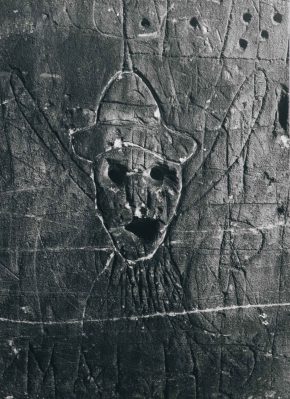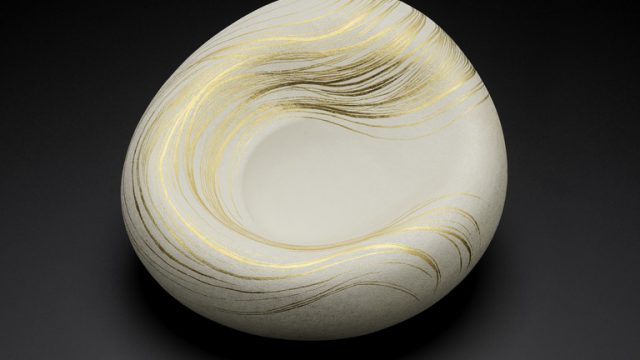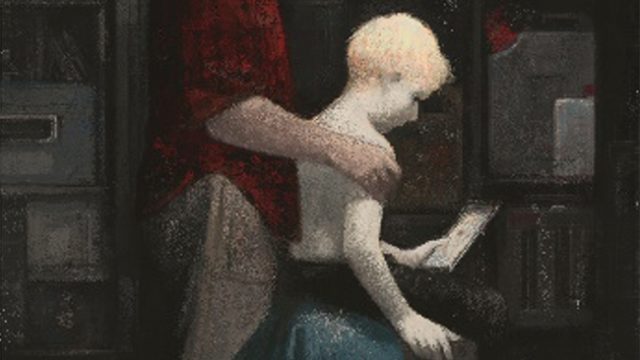Over the last few months, I have been cataloguing a group of 99 photographs by the Hungarian photographer Brassaï. They were acquired by the V&A as part of a bequest from his widow, Mme Gilberte Boyer Brassaï, who died in 2005. Brassaï was born in 1899 as Gyula Halász in the Transylvanian town of Brassó. He grew up in Budapest and spent the early 1920s in Berlin, training as a painter and working as a journalist. He moved to Paris in 1924, where he adopted his moniker of Brassaï (meaning ‘from Brassó’) and took up photography. He stayed in Paris until his death in 1984.

Brassaï is best known for his earlier photographs of Paris. In the 1930s, he travelled the city making night-time images of eerie street scenes and the scandalous nightlife of bars and brothels. Before beginning this cataloguing project, I felt familiar with Brassaï’s work and with him as a photographer. However, spending hours poring over a broad range of his work feels very personal and has given me a chance to delve into the less iconic areas of his oeuvre. The Graffiti series has been most intriguing for me. It has never been my favourite of his work and it would not be the work I would choose to live with. However, the longer I spend with these photographs, the more confident I am that they really epitomise the essence of Brassaï as an artist.

For more than two decades from 1933-1956, Brassaï documented carvings and etchings graffitied onto the walls of Paris. Some of them are representational, depicting faces, animals and hearts. Other photographs feature less recognisable markings, often just burr-holes or abstract patterns. In these instances, Brassai’s framing of the photograph is paramount, as his compositional choices have the power to transform random markings into scenes that fit one of his nine categories. A condensed version of these categories were first introduced in the press release for the initial exhibition of the Graffiti work at the Museum of Modern Art, New York, in 1956. However, it was with the publication of the book Graffiti, in 1960, that these categories were finalised into the following sections: The Wall as Inspiration; The Language of the Wall; The Birth of the Face; Masks and Faces; Animals; Love; Death; Magic; Primitive Images. These divisions might appear quite simplistic, but they have a strong impact as they allow Brassaï to build a dramatic narrative around the unremarkable. ‘The Birth of Man’ transforms random cavities into the primitive faces of early men, emerging from the stone as if awakening from a lifelong slumber. ‘Love’ turns common imagery of hearts and rays of sunshine into a frenzied, all-consuming expression of the emotion. ‘Magic’ presents a foreboding underworld, grouping together depictions of devils, scarecrows and hangings.

Brassaï controls our interaction with this work through his enforcement of categories. He informs us of how the non-representational carvings should be interpreted and creates associations between those that are recognisable. The narrative intensifies as we journey through different groups, beginning in a pre-life world, experiencing the emergence of man, love, and death, descending into the supernatural and ending, in a cyclical style, with primitivism. Repeated motifs in the groupings build momentum; one face becomes a crowd of faces and the birth of one man leads to the birth of a ‘nation’. He reveals a secret, alternate life cycle of Paris, complete with human concerns of humanity and mortality.

This series has Surrealist inclinations, as did much of Brassaï’s work. In their suggestions of a mysterious underworld, his night-time photographs quickly caught the attention of André Breton, the founder of Surrealism. The Surrealists were concerned with the line between the conscious and the subconscious, and Brassaï’s work presented apt imagery to accompany their theories. His ability to present something indisputably real, such as Parisian graffiti, and turn it into a world of stone men, devils and death appealed to the Surrealists. His work, including the Graffiti series, was published extensively in their publication Le Minotaure. However, Brassaï turned down their offer of membership and was careful never to submit himself entirely to Surrealism. Perhaps it came down to a dilemma; that while Brassaï enjoyed exploring the line between reality and surreality, he was inherently loyal to the camera as a thing of literal documentation. If photographs had an undeniable link to the truth of the material world, how could he surrender himself to the immaterial?
These wall carvings would have gone unnoticed by millions of Parisians on a daily basis, passed over as peripheral details in day-to-day life. It took a photographer, in love with a new profession and exploring a new city, to bring the walls to life and to broader attention.




Beautiful writing, great post. Would be wonderful to see them.
I’m currently researching Brassai for a photography class project, and this article helped me understand a deeper meaning in his photos. Thank you so much for that :)).